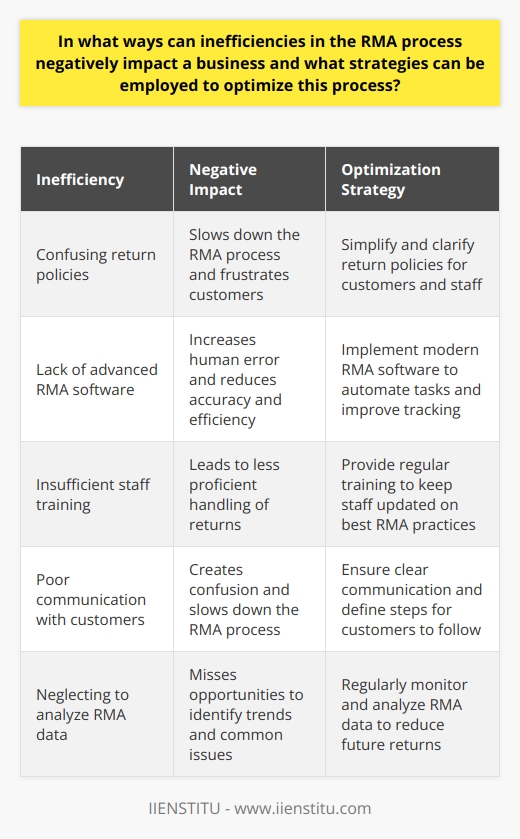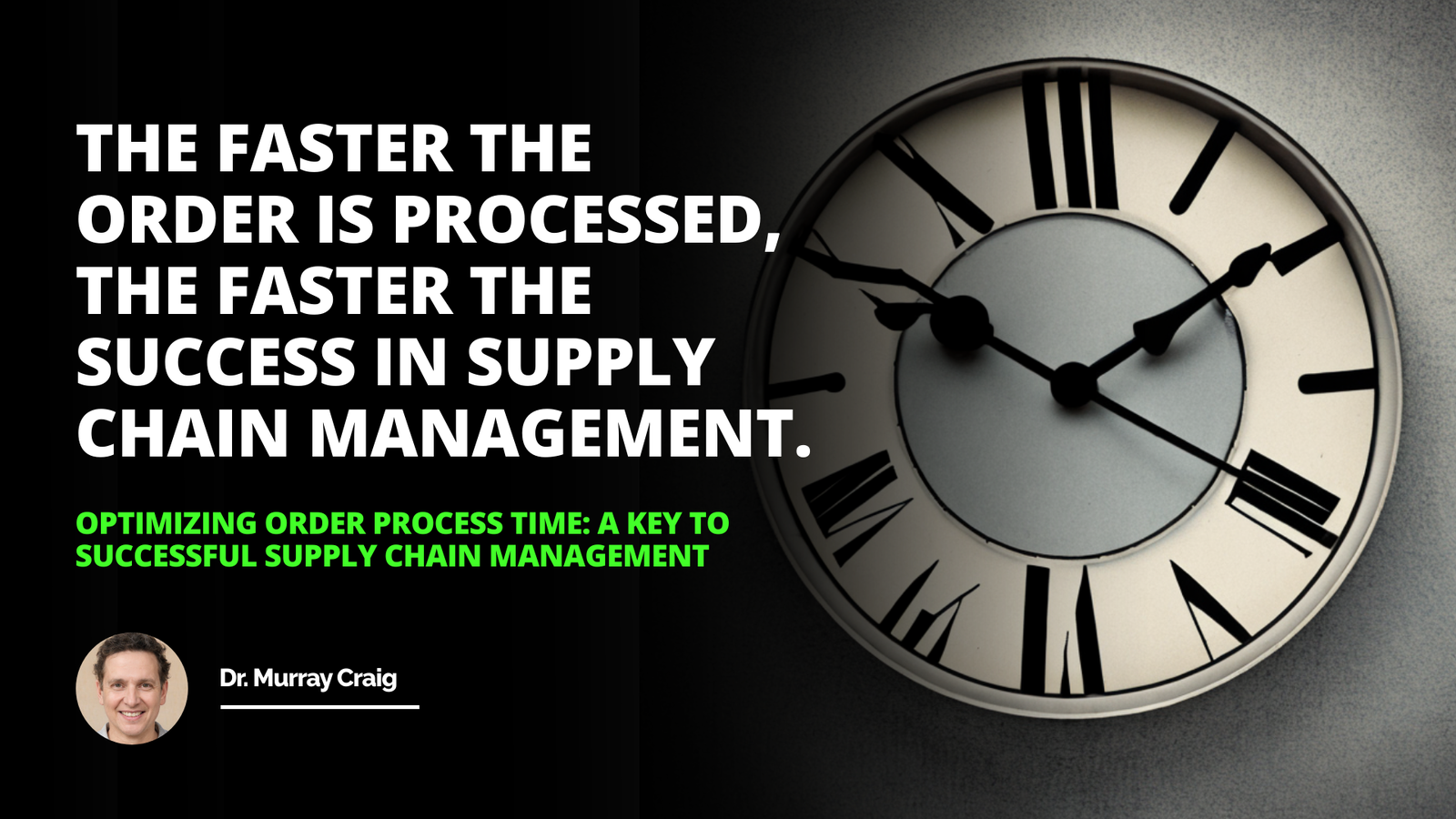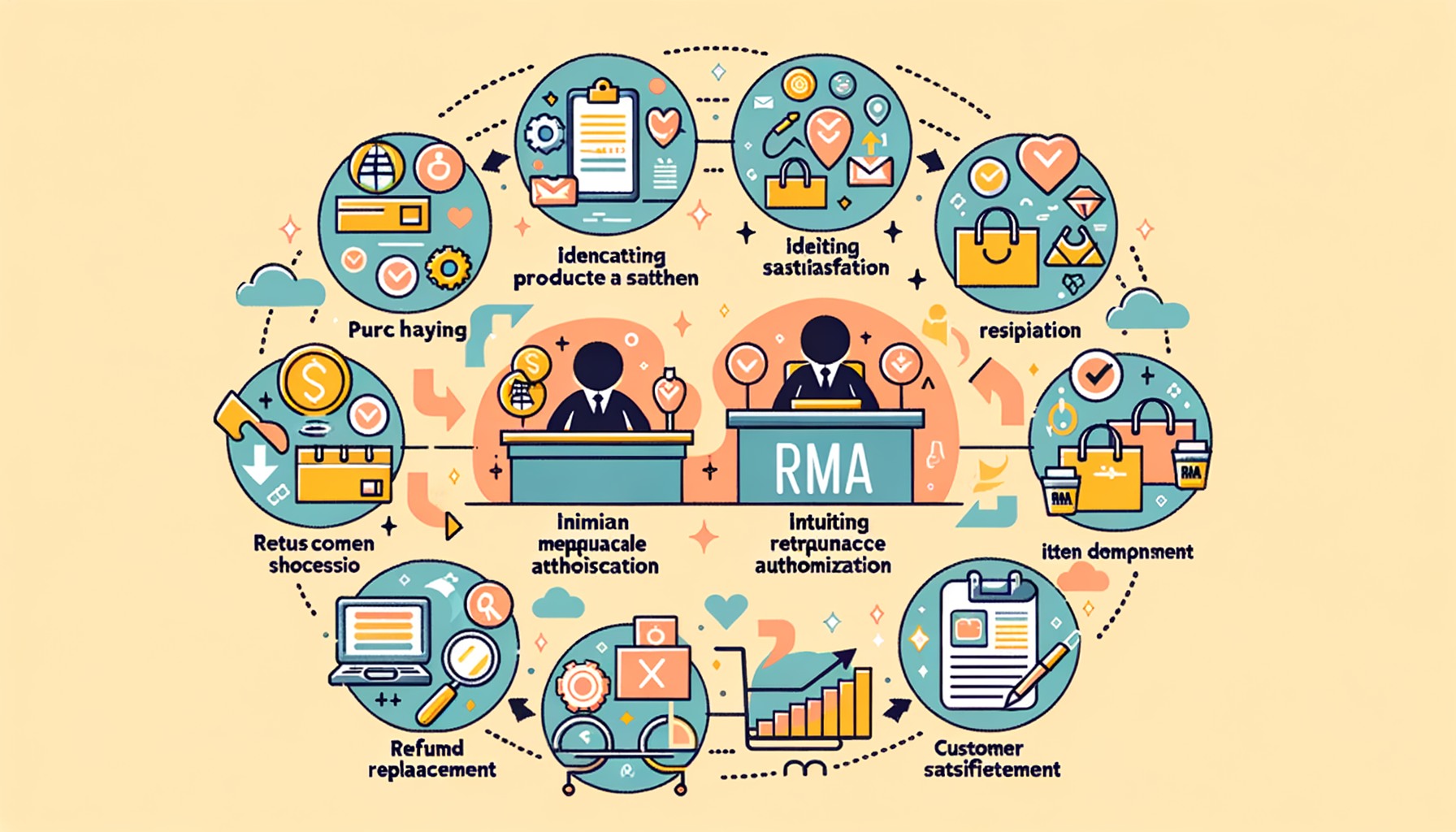
The dynamics of purchasing and returns have evolved significantly with the advent of e-commerce. A critical aspect of this ecosystem is the Return Merchandise Authorization or RMA. This process acts as a gatekeeper, ensuring that returns and refunds flow smoothly between customers and businesses. Understanding RMA is not just a necessity, it is an anchor in fostering trust and ensuring customer satisfaction.
This process is particularly vital in an age where online transactions have become the norm, and the ability to return goods effectively can make or break the customer service experience.
Understanding Return Merchandise Authorization
Explanation of the RMA process
The RMA process begins when a customer decides that a product does not meet their needs or expectations. This might be due to a range of factors, such as defects, incorrect items, or a change of heart. The customer requests authorization from the seller to return the item. Once the request is reviewed and approved, the customer may return the merchandise, preferably with appropriate documentation and packaging.
The returned item is then inspected upon receipt, and the RMA is closed with an appropriate resolution – usually a repair, replacement, or refund, depending on the policy of the vendor.
The Purpose of an RMA system
An RMA system serves multiple purposes that help maintain the integrity of the returns process. It enables tracking returns through unique RMA numbers, which help ensure that a customer's request is processed efficiently and accurately. It also acts as a protective measure to prevent unauthorized returns, which could result in loss or fraud.
Lastly, it helps businesses manage responses to returns, be those replacements or refunds, keeping the operation's finances and inventory in check.
Components essential to an RMA system
For an RMA system to be effective, certain components are non-negotiable. These include transparency regarding the condition of the returned item, the timeline for processing returns, and the expected outcome.
Furthermore, RMA systems often incorporate a status tracking component, ensuring that customers can monitor the progress of their returns without requiring constant support from customer service representatives. This fosters trust and demonstrates a commitment to customer satisfaction.
The Role of RMA in Business Operations
Maintaining customer relations
A successful RMA process underscores a business's commitment to exceptional customer service. Illustrating good customer service lies not only in selling products but also in managing post-sale interactions adeptly.
This ensures that customers are likely to remain loyal, even if their initial purchase did not meet expectations. Enhancing customer satisfaction through a reliable RMA process likewise has a positive impact on word-of-mouth marketing and brand reputation.
Ensuring efficient business operations
From an operational standpoint, an RMA process serves as an example of a streamlined return process. It saves time and resources by providing a clear system for managing returns. Importance in inventory management cannot be overstated, as returns directly influence stock levels, and subsequently, sales and revenue forecasting.
A refined RMA system can help a business maintain accurate inventory records and reduce losses from returned goods.
Leveraging RMA for Strategic Insights
The data gleaned from RMA can be invaluable. It can highlight trends in product defects or customer dissatisfaction, acting as a feedback mechanism for improving product quality and service.
Indeed, RMA can be transformative when integrated with broader quality control and customer relationship management strategies, turning potential negatives into proactive areas for business improvement.
Key Elements to Consider when Implementing an RMA System
Automation and technology utilization
Leveraging technology can greatly enhance the RMA process, making it quicker and more reliable. Automation can expedite the authorization process and track returns more efficiently, reducing human error and improving turnaround times. Technology solutions can also assist with restocking returned items efficiently, ensuring that inventory remains dynamic and up-to-date.
Clear communication with customers
Clarity is pivotal when interacting with customers initiating an RMA. Policies must be communicated unequivocally, ensuring customers know what to expect at each step. This means providing detailed instructions for return shipping, explaining terms and conditions, and setting realistic expectations on refund or replacement timelines.
Easy RMA initiation process
The initiation of an RMA should be a frictionless experience for the customer. Simple, accessible methods for requesting returns, such as online forms or integrated services within an e-commerce platform, can remove barriers, encouraging trust and repeat business. After all, the goal is not to dissuade returns, but to manage them with optimal efficiency and customer convenience.
Common Challenges of RMA Management
Detailed scenarios of potential challenges
RMA management can be fraught with challenges, from logistical issues to customer disputes. Detailed scenarios include products being returned outside of the return window, returned items that have been damaged by the customer, or discrepancies between the reported issues and the actual condition. Each of these presents a unique obstacle that requires a nuanced approach to resolve.
Recommending solutions for each problem
For each potential challenge, businesses must have predefined solutions. This could include a no-questions-asked policy within a certain timeframe or insurance on shipped products to mitigate losses from damage. Customer support teams should also be equipped with the authority and knowledge to handle disputes and unusual circumstances adeptly.
Case Study: Effective RMA Management Practices
Comprehensive review of a business with successful RMA practices
There are businesses today that exemplify best practices in the realm of RMA. Examining these cases can provide direct insights into how effective RMA management can not only alleviate the burdens of returns but can actually enhance customer loyalty. These businesses consider RMA services not as a necessary evil but as an opportunity to demonstrate commitment and trustworthiness.
Tie-in of previous sections with this practical example
An effective case study ties together theory and practice, illustrating how the deliberate implementation of a streamlined RMA system, clear communication, and customer convenience can translate into real-world success. Such examples can offer valuable learning points for other businesses aiming to refine their own return processes.
Conclusion
Recap of the importance and role of RMA
The importance of Return Merchandise Authorization in the landscape of modern commerce cannot be overstated. It plays a vital role in maintaining customer relations, ensuring efficient business operations, and providing strategic insights for continual improvement.
Encouraging steps towards effective RMA management
Businesses of all sizes should be encouraged to critically assess and refine their RMA practices. Incorporating automation, maintaining clear communication, and making the RMA process customer-centric are all steps towards this goal.
When executed well, RMA becomes not just a process but a hallmark of customer service excellence. Whether through undertaking a logistics online course to gain deeper understanding or reviewing online courses to update teams on the latest in RMA technologies, ongoing education and improvement in this area are essential for sustained success.

Frequently Asked Questions
What is the process and significance of Return Merchandise Authorization in supply chain management?
Understanding Return Merchandise Authorization
Return Merchandise Authorization (RMA) serves as a critical process in supply chain management. It involves returning goods from customers to suppliers. Companies need to manage returns efficiently. This preserves customer satisfaction and controls costs.
The Significance of RMA
RMA holds immense significance in the supply chain. It ensures product quality and customer trust. Businesses use RMA to maintain service standards. It also helps in managing inventory and financial accounting. RMA contributes to sustainability by reducing waste.
The RMA Process
The RMA process typically starts with a customer complaint. Customers request returns for various reasons. These include defects, incorrect items, or buyer's remorse. The seller then provides an RMA number. This number is crucial for tracking the return.
Receiving Returns
Upon receiving the return, the seller inspects the product. Sellers decide to repair, replace, or refund based on the policy. Items restock if they meet quality controls. Businesses must document every step. This maintains clear records for future reference.
Data Analysis
Businesses analyze return data for patterns. This analysis reveals product issues or customer insights. Companies adapt their strategies based on this information. It drives improvements in products and services.
Communication
Effective communication with customers is vital. Companies must act transparently throughout the RMA process. Clear communication ensures customer satisfaction. It also encourages loyalty and repeated business.
Best Practices in RMA
Setting Clear Policies
Businesses should establish clear RMA policies. Clear policies simplify the process for customers and staff. Customers understand their rights and obligations. Staff follow consistent guidelines during assessment.
Streamlining Operations
Companies must streamline RMA operations. This includes fast processing and accurate record-keeping. Streamlined operations reduce costs and turnaround time. They also improve customer experiences.
Leveraging Technology
Technology plays a key role in managing RMA. Automation and tracking systems enhance efficiency. They help in monitoring returns and analyzing data. Businesses gain valuable insights to inform decision-making.
Continuous Improvement
Adopting a mindset of continuous improvement is essential. Companies should refine RMA processes over time. They learn from each return. This learning leads to fewer future returns and better products.
In sum, RMA is pivotal in supply chain management. It influences customer relations and business insights. Effective RMA practices can lead to significant competitive advantages. Businesses that master it can see improved customer loyalty and operational efficiency.
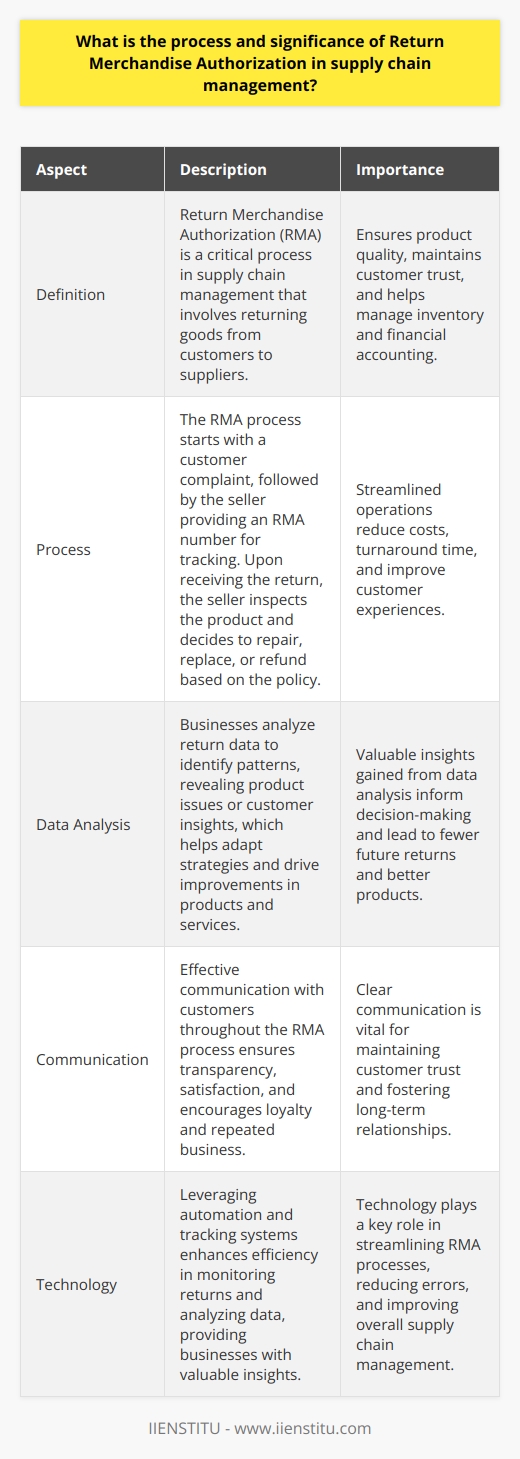
How do businesses benefit from an effective RMA process in terms of customer satisfaction and operational efficiency?
Effective RMA Processes Enhance Customer Satisfaction
Businesses recognize the pivotal role of returns management. An effective Return Merchandise Authorization (RMA) process stands vital. It can greatly advance customer satisfaction. Customers value a hassle-free return policy. They prefer firms that simplify the return process. Quick, easy, and transparent RMAs build customer trust. This encourages repeat purchases. Customer loyalty subsequently increases.
Streamlining Returns Builds Trust
A streamlined RMA system conveys professionalism. Companies show commitment to customer care. Clear guidelines and simple steps reassure customers. Customers then feel valued. They perceive the business as reliable. This generates positive word-of-mouth. Such endorsements from customers can boost a company's reputation.
Immediate Issue Resolution Keeps Customers Happy
Responsive RMA systems address issues immediately. Customers receive prompt service, enhancing their experience. Swift responses to return requests heighten satisfaction. This shows a business’s dedication to fulfilling customer needs. Resolving problems quickly retains customer goodwill.
Operational Efficiency Through RMA Optimization
Effective RMA processes significantly improve operational efficiency. They reduce processing time and lower costs. Streamlining returns minimizes administrative burden. Efficient RMAs contribute to better inventory management. Businesses can restock or dispose of returned items rapidly.
Faster Processing Saves Time and Money
An efficient RMA process shortens the return cycle. Fewer resources spent on returns free up capital. Reduced handling times translate to cost savings. Staff can focus on core tasks, boosting productivity.
Accurate Data Improves Inventory Management
RMA systems provide valuable data analytics. Businesses can track return reasons and volumes. This knowledge informs better inventory decisions. Companies can adjust purchasing and reduce overstock. Enhanced inventory management leads to fewer write-offs.
Leveraged Feedback for Product Improvement
Returns data help businesses identify product defects. Companies can leverage such insights for improvements. Enhanced products mean fewer future returns. This reduction in returns buttresses the bottom line.
In conclusion, an effective RMA process provides dual benefits. Customers enjoy satisfactory return experiences. Businesses gain operational efficiency. Both results are paramount. They contribute to sustainable business growth and robust bottom lines.
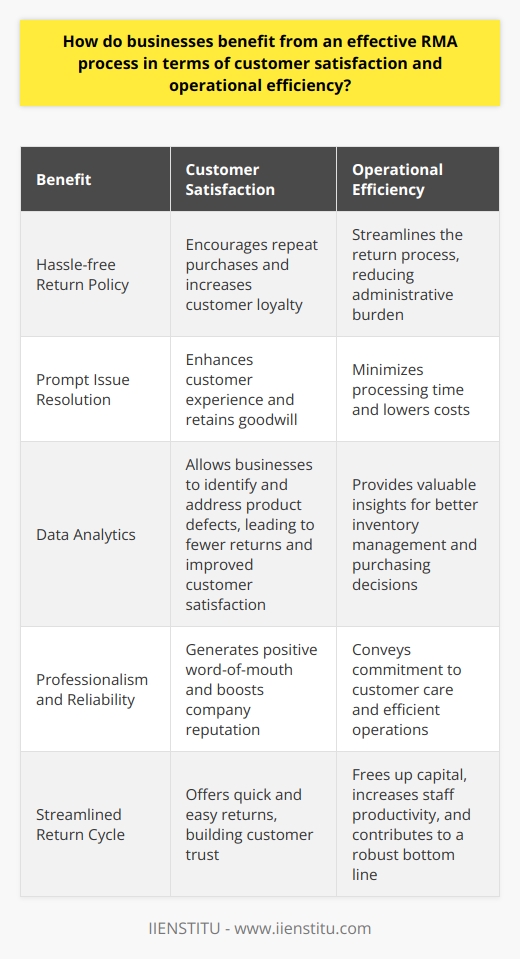
In what ways can inefficiencies in the RMA process negatively impact a business and what strategies can be employed to optimize this process?
Understanding RMA Inefficiencies
Any business dealing with physical goods encounters returns. The Return Merchandise Authorization (RMA) process plays a crucial role here. When this process falters, the effects can ripple throughout a company. Recognize inefficiencies and take steps to correct them to avoid detrimental impacts on operations and customer satisfaction.
Customer Satisfaction Declines
First, poor RMA handling frustrates customers. They expect quick, hassle-free service when returning products. Delays or errors erode trust and can turn one-time issues into lasting dissatisfaction. People may share negative experiences, influencing potential customers. Gain insight into customer expectations. Ensure your RMA process meets these to maintain positive relationships.
Inventory Management Suffers
Second, inventory complications can ensue. Products awaiting RMA authorization might become dead stock. Manage returns efficiently. Keep inventory moving and avoid excess capital tied up in non-sellable goods.
Financial Implications are Broad
Next, consider the financial strain. Delayed RMA processing ties up resources. This can burden the cash flow of a company greatly. Address inefficiencies to improve cash flow. Ensure financial stability within your business operations.
Reputational Damage Can be Lasting
Moreover, a business's reputation is at stake. Slow, inaccurate RMAs tarnish a brand's image. Such reputational damage is hard to repair. Enhance the RMA process. Maintain a reputation for reliability and accountability.
Strategies to Optimize the RMA Process
Optimization strategies revolve around streamlining and accuracy. Here are ways to achieve these goals.
Streamline Return Policies
Start by clarifying return policies. Confusing policies slow the RMA process. Simplify these. Aid customers and staff in understanding the steps involved.
Implement Advanced RMA Software
Use RMA software to your advantage. Modern solutions facilitate process tracking. This software can automate tasks and minimize human error. Find a robust RMA system. See improved accuracy and efficiency.
Train Staff Regularly
Training staff is also crucial. Well-informed employees handle returns more proficiently. Offer regular training. Keep your team updated on best RMA practices.
Communicate Clearly with Customers
Ensure clear communication with customers. They need to know what to expect. Define clear steps for them. This reduces confusion and streamlines the process.
Analyze RMA Data for Insights
Always monitor RMA data. It can reveal trends and common issues. Analyze it. Adjust processes to reduce future returns.
Foster Strong Supplier Relationships
Maintain good ties with suppliers. They play a role in the RMA process. Collaboration can lead to better product quality. This, in turn, can reduce the number of returns.
Regularly Review and Adjust the Process
Lastly, never stop optimizing. Business environments change. New challenges emerge. Regularly review and adjust your RMA procedures. Keep them as efficient as possible.
By maintaining attention to these areas, businesses can mitigate the negative impacts of RMA inefficiencies. It requires a proactive approach but results in a more resilient and customer-friendly operation.
